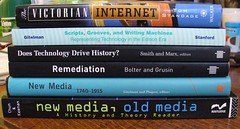Come closer, a little closer, ok there. Here goes- PR isn’t rocket science. There, I said it and I’m proud of it. Over the years, this thought has come to me many times when talking with other professionals I respect deeply. It usually comes up when chuckling about some huge embarrassing PR gaffe we hear about that leaves you just scratching your head wondering “why would they do that?”
Now, I want to be clear that I’m not saying that all the wonderful PR people I know aren’t talented, brilliant, and dedicated professionals in the truest sense of the word. But when it comes down to it, our goals often rely on taking a message (from our employer, a client, our own) and finding a way to connect it to an audience that we want to reach and engage. Not rocket science.
I wish it were a magic formula that only a few people had cracked and I was a member of that exclusive club, but much of what we try to do boils down to understanding the workings of the amazing human brain. PR people need to spend time understanding what motivates people to take the action we want or need them to take. The challenge (and this is where we can actually add a lot of value and earn our keep) is to get past yourself and your organizations’ collective thoughts of “this is the greatest piece of news ever- everyone will want to know this” and move to a view of your audience who is thinking “why in the world do I need this info and how does it fit in my life?”
There’s a simple tip that I learned from a great mentor—“So what.” That’s it, from the audience perspective I want to be able to give them a good answer when they ask “so what.” I need to deliver the important part of my communications in a clear, simple manner that gives them a personal answer to that question and gives them a motivation to spend their time and remain connected with what I’m saying.
Now, in an era of more communication channels than ever before, how does this concept change? Not that much. When looking at how to engage customers or supporters via social media or Web 2.0 the concept remains the same though the method of engagement changes dramatically as we have a chance to connect more directly with our audience in real-time. Before creating a massive SM campaign that hinges on a new promotion, adding dedicated SM staff, or building a new Web site with enhanced functionality think first about how you can add value to your audience.
Think about some basics that drive behavior:
· What does your audience already know?
What is their experience which will shape how they interpret your message? Think about things like history with your brand/competitors as well as regional or cultural elements.
· What do you want them to do?
You’d better get this sorted out in a very clear way before engaging in the SM space. Failures in this area can be found everywhere....like when you see five updates a day from someone on Twitter that only includes when they got up and what they’ve eaten all day. If this is the best you can do, please don’t. You’ll only hurt your reputation if you hop online and haven’t thought this question through and figured out how you can actually provide people with a way to engage in a manner that’s good for them and drives your goals.
· How is it personal to them?
Put yourself in their shoes and answer my favorite question: So what? Run your information through this screen and see if you have a good answer to what you’re adding in their lives. This element is especially true in the social media space. The most successful individuals and organizations online get this point and focus on it consistently. The advances in social media aren’t realized by just pushing content out in one more channel but by adding value to people online in an honest way right where they’re at in their lives. It’s the potential for personal connections that make SM so valuable. However, you need to realize that it can’t just be about your info but rather what about your interests matches those of your audience.
If you’d ever like to talk more about the simple premise of communications (the devil is always in the details) just let me know. I would love to hear from you. It isn’t rocket science but it sure can be fun.
@dfolkens










![Reblog this post [with Zemanta]](http://img.zemanta.com/reblog_e.png?x-id=da212ae4-96c0-4996-b6b7-f55a7f309ff6)



